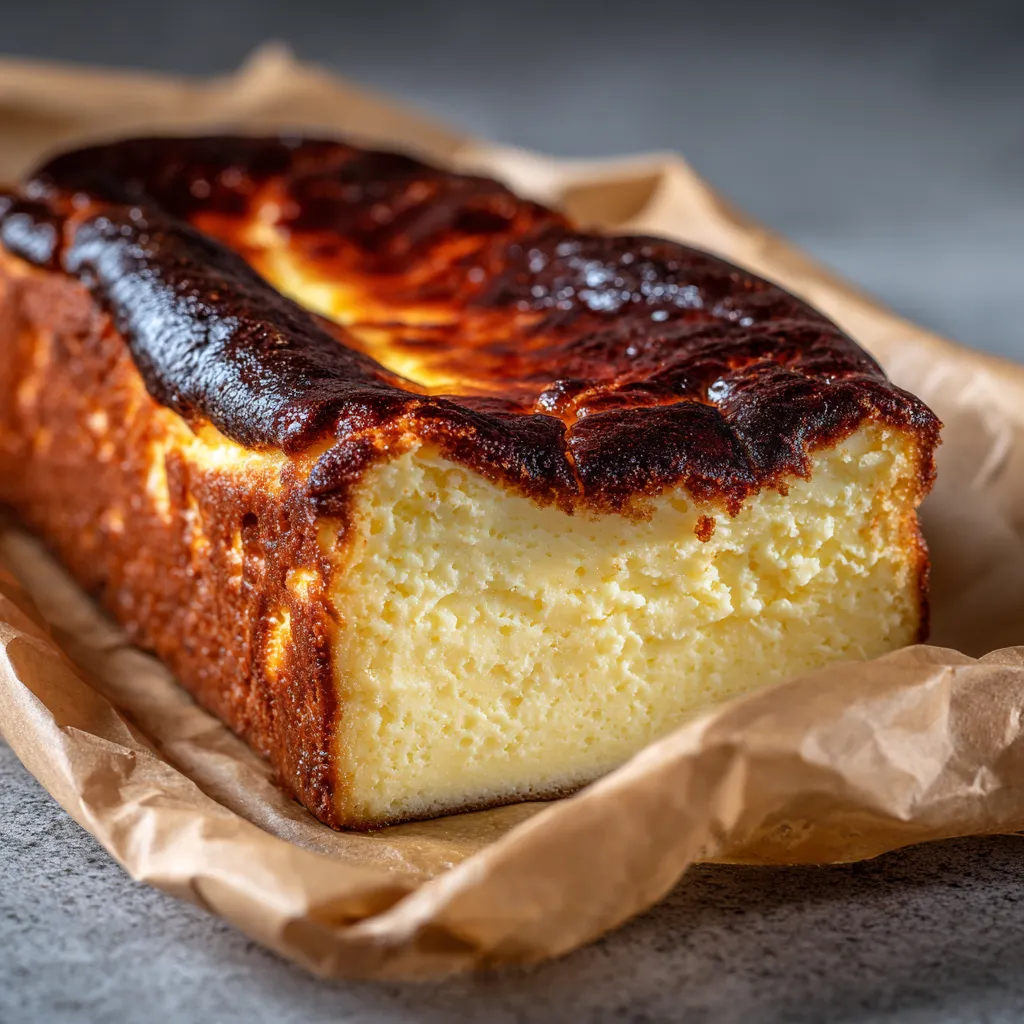 Save
Save
This burnt Basque cheesecake bakes up beautifully in a loaf pan and brings the signature caramelized top and creamy, custardy middle of the traditional Spanish dessert scaled down for a small gathering or a sweet little weeknight treat. The process is surprisingly simple and requires no water bath or tricky equipment—just rich cream cheese, pantry staples, and high heat for that signature finish.
I first baked this after craving something indulgent on a rainy afternoon and could not believe how simple it was. Now it is one of my go-to desserts for impressing friends with minimal effort.
Ingredients
- Cream cheese: full-fat for richness and that signature creamy texture let it soften fully for easy mixing
- Granulated sugar: brings sweetness and also caramelizes with the top for that deep color use fine sugar for even blending
- Eggs: at room temperature for a smooth texture and proper rise make sure no cold spots
- Heavy cream: pushes the custard-like texture over the top I like using local cream for extra flavor
- Vanilla extract: rounds out the flavors use pure extract not imitation for a better aroma
- Salt: enhances and balances all the sweet and dairy flavors choose fine salt to dissolve evenly
- All-purpose flour: provides a touch of structure use fresh flour for the best result and sift before adding to keep the batter smooth
Step-by-Step Instructions
- Prepare the Pan:
- Line a loaf pan with parchment paper allowing plenty of overhang on the sides for easy lifting after baking
- Cream the Cheese and Sugar:
- Beat softened cream cheese and granulated sugar together in a large bowl until the mixture is creamy smooth and fluffy with no lumps this step takes about three to five minutes with electric beaters
- Add Eggs:
- Crack in the eggs one at a time mixing well between each addition the batter should be silky without streaks of egg
- Incorporate Cream and Flavorings:
- Pour in the heavy cream vanilla extract and salt then beat again until the mixture is entirely blended and very glossy scrape down the sides of the bowl
- Add the Flour:
- Sift the all-purpose flour directly over the batter then fold it in gently with a spatula just until incorporated avoid overmixing to keep the cheesecake delicate
- Fill the Pan and Remove Bubbles:
- Pour the finished batter into the prepared pan then tap the pan gently on the counter to break up any air bubbles inside
- Bake for That Famous Burnt Top:
- Place the pan in a fully preheated oven at four hundred degrees Fahrenheit bake forty to forty five minutes until the top is deeply golden with some dark spots and the center still jiggles when shaken
- Cool and Chill Thoroughly:
- Allow the cheesecake to cool completely to room temperature inside the pan then move it to the refrigerator to chill at least four hours or preferably overnight for the best slicing texture
 Save
Save
Burnt Basque cheesecake holds such nostalgia for me since it was one of the first fancy desserts I ever baked successfully It is endlessly impressive but needs only simple pantry choices My favorite part is watching the top develop golden blisters while the kitchen fills with a toasted caramel aroma
Storage Tips
Keep leftover cheesecake covered tightly in the refrigerator for up to four days If you want perfectly clean slices a chilled cake and a sharp knife dipped in hot water is my best trick The flavor improves as it rests so do not rush to eat it all on day one
Ingredient Substitutions
If you are out of heavy cream try using a blend of whole milk and a spoonful of extra cream cheese to keep the custard feel You can experiment with a touch of lemon zest instead of vanilla for a subtle twist Avoid low fat cream cheese since you will lose the creamy richness
Serving Suggestions
For a classic presentation serve each slice as is maybe with a light dusting of powdered sugar or some seasonal fruit This creamy and caramelized cake stands well on its own but it also loves a dollop of whipped cream or tangy crème fraîche
Cultural Note
Burnt Basque cheesecake hails from the Basque Country and gets its signature look from baking at a high temperature until the top blisters and caramelizes The center is intentionally less set than American cheesecake making for a unique custardy bite That wild almost brûléed look means every cake is deliciously unique
Recipe FAQs
- → Why use a loaf pan for Basque cheesecake?
A loaf pan yields a taller, smaller-scale cheesecake, making it ideal for small batches or intimate servings.
- → How do I know when the cheesecake is done baking?
The top should be deeply golden with the center still slightly jiggly when shaken for that signature creamy texture.
- → Can I use low-fat cream cheese?
Full-fat cream cheese ensures a creamy, smooth consistency. Low-fat versions may not achieve the same richness.
- → How long should I chill before slicing?
Chill for at least 4 hours, preferably overnight. This helps the cheesecake set properly for the best texture and clean slices.
- → What causes the caramelized top?
Baking at a high temperature allows the sugars to caramelize quickly, creating a signature dark, flavorful crust.
